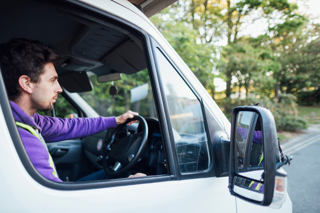Companies and commercial fleet drivers are being warned not repurpose car-derived vans into more car-like vehicles to try to make savings in Benefit-in-Kind (BIK) and vehicle taxation.
Burton upon Trent fleet management specialist, CBVC Vehicle Management, says that it has been approached on several occasions by companies looking to repurpose vans as passenger carrying vehicles without incurring additional tax charges.
The theoretical tax savings are clear to see. As a van, the vehicle qualifies for:
- Full VAT recovery for outright purchases.
- Full recovery of VAT on lease rentals.
- 100% offset of lease rentals against corporation tax.
- BIK scale charge of £3,430 for a van with private use in the current tax year.
- National Insurance Contributions (NIC) based on scale charge.
Based on the scale charge, a 20% tax paying driver would have a tax bill of just £686 per annum with £1,372 for a 40% tax payer. There is also a flat-rate van fuel benefit charge of £655 for the same tax year.
By comparison, a comparable company car will have a BIK tax bill many times greater than a van, with only 50% of the VAT on leasing rentals being recoverable and NIC paid on the vehicle’s full scale charge based on its PIID value.
As a result, CBVC explains, some companies may be tempted to “acquire a van and then repurpose it with rear seats, for example, while still claiming it as a van and paying the appropriate van tax rates”.
CBVC managing director, Mike Manners, said: “We have been asked this question on several occasions, by companies running what are clearly car-derived vans.
“But then, perhaps in response to dealer advertising or the wrong advice, they have sought to retro-fit items, such as rear seats, to turn them into what in the eyes of HMRC would be passenger cars.”
HMRC guidance
HMRC has a strict set of criteria that qualify a vehicle as a light commercial or car-derived van rather than a passenger car.
HMRC classifies a vehicle as a van where:
- The rear seats, even easily removable ones, and seatbelts have been taken out, along with their mountings. It is not enough to merely cover them over or fill in holes with a non-metal cold substance, which can easily be removed later .
- Examples of suitable methods of disabling are welding up the bolt-holes or fitting bonded shear-bolts.
- The rear area of the shell is fitted with a new floor panel to create a payload area
- The vehicle’s side windows to the rear of the driver’s seat have been made totally opaque.
- The mechanism for raising and lowering the windows in the rear side doors, where applicable, has been disabled or removed.
Full details can be found on www.gov.uk.



















Login to comment
Comments
No comments have been made yet.